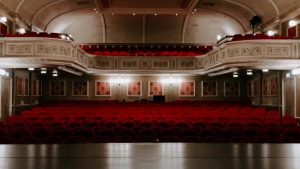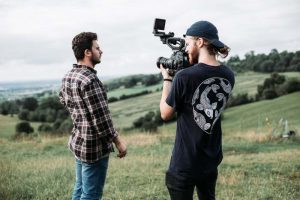We are all here for the same reason, to tell dynamic stories through our performances. “The Method” is a way to get there. Keep in mind, it is not the only way, just a way. For a sneak peak at Method Acting I highly recommend checking out Emily Meredith’s article on the subject. I am not going to discuss the history or evolution of The Method. This article is going to focus on how to make it work for you, in theory. This article is meant to be an overview of the basic Method Acting techniques.
Lesson Number One: The Method is not for all people
It is important to understand that “The Method” is not for all people. In fact, even Konstantin Stanisalavski, creator of “The System” which is the precursor to “The Method”, broke with one of the major tenets of Method Acting. There is also a lot of confusion regarding people who use “The Method”. Marlon Brando is supposed to be the preeminent Method actor. In fact, when you google “Method Actors” his picture from “A Streetcar Named Desire” pops up. Marlon Brando was not a Method actor. He studied with Stella Adler who broke with Method Acting techniques very early on. He even wrote the forward to Adler’s book, The Technique of Acting. If you don’t resonate with the techniques here, that is totally fine. You are not any less of an actor.
Lesson Number Two: Why is Just as Important as What
The first thing I like to teach new actors is taken directly from Method Acting. At no time should you do a thing on stage without knowing WHY the character is doing it. I call it “Magic Why”. Like a child, we can keep asking why until we get to the raw truth of the matter. When we are in a scene, all of our emotions and actions are driven by the moment before, and the emotional baggage the character enters the scene with. If we, as actors, don’t develop what that moment before is, then everything on stage will feel flat and unconnected.
To further explore this let’s take the first scene of “Rabbit Hole” by David Lindsay-Abaire. Izzy starts the play knowing she is pregnant. She also knows that Becca is still grieving the loss of her child. If we let that inform the choices we make in the scene, then our approach to the action and dialogue needs to help tell that story. Otherwise, when the pregnancy comes out, it doesn’t catch the audience by surprise.
Lesson Number Three: Relaxation is the Key
I haven’t found anything in life that is made better by being tense. Acting is the same way. “The Method” teaches that an actor must be totally relaxed so that they can totally invest themselves in the character. I like to think of this like a medium at a seance in an old movie. The actor totally embodies the character, sometimes to the point that it is hard to let the character drop after a scene. Daniel Day-Lewis is rumored to never drop character between takes. I have worked with actors who would only answer to the character’s name. I was even in a show where the director encouraged it. To make that happen, the cast would find ways to stay relaxed backstage. There was a lot of deep breathing and pseudo-mediation. One guy was so worried about getting it right that he couldn’t actually relax.
It is important for people who are new to The Method to not concern themselves with the end result of relaxation. At first, the goal should just be to relax. Don’t worry about characters or motivations yet. Just take a minute to relax and let the worries of the day slip away. Even if “The Method” is not for you, I still strongly encourage this practice.
Lesson Number Four: Imagination is the Road to Creation
There is no way for an actor to really live the lives of characters. We know this because we are us and the characters are the characters. It seems really basic, but when we are talking about techniques, the basics are sometimes the hardest part. Since we, as people aren’t our characters, how do we, as actors, become our characters? We have to pretend. Children pretend all the time. They can create worlds and characters with seemingly no effort. “The Method” teaches that we must harness those creative skills that mature society convinced us to let go of.
Think back to your last imaginary friend. Remember all those conversations you had? How real did they feel? The imagination is where all of the art we do is created. If we don’t develop our imagination then we have no hope of creating an experience that is anywhere near as real as the imaginary friends of our childhood. The Imagination is part of our instrument, as an actor. According to “The Method”, it must be cultivated so the actor can live as close to the life of the character as possible.
The Tip of the Iceberg
These are overviews of the first four lessons that I teach on ‘The Method”. This is not, by any means, comprehensive. Studying Method Acting techniques is a lifelong journey. Many actors have found success using it. Many actors have found success without it. It all depends on how you feel while practicing it. If it feels right, then it might be for you. If not, there are many other acting styles you can choose from. Or you can take a little bit of everything and create your own. However you get there, our goal is always the same. We aim to tell dynamic stories through vivid living characters. The rest is just set dressing.
Stephen Scarlato


